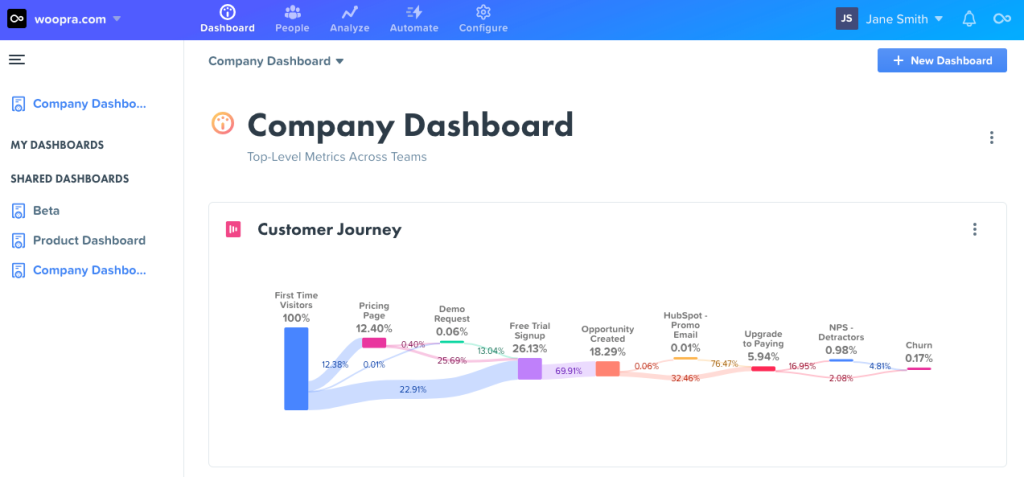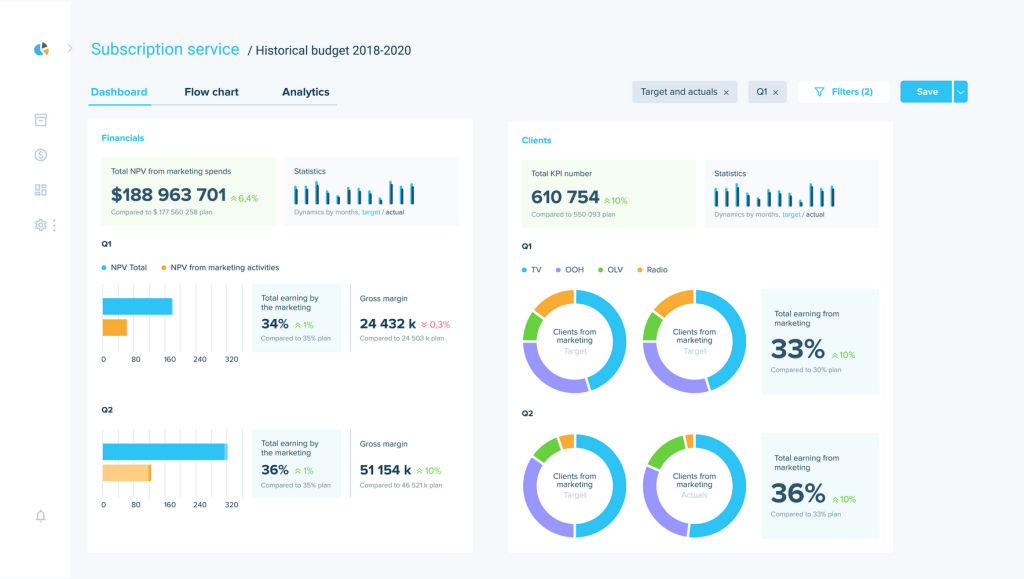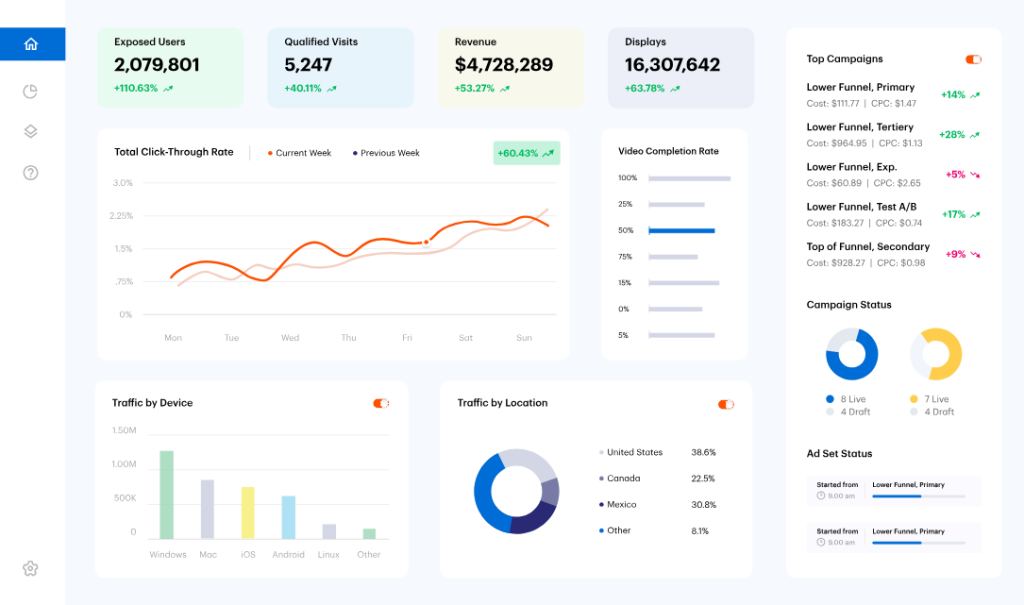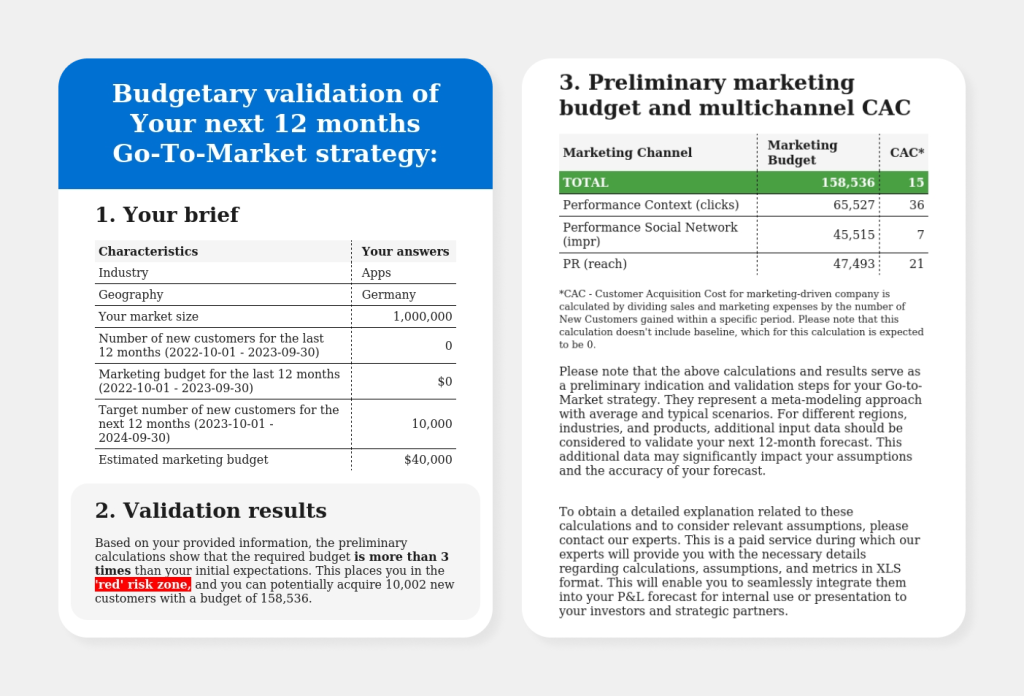
|
Achieve Excellence with these Technological Marketing Tools
Technological marketing opportunities
Technological marketing refers to the use of technology to support promotional activities and reach target audiences. It involves leveraging various digital tools, platforms, and channels to gather data, create, and distribute ad messages, and measure their impact. Here we will talk about examples of technological marketing that brands should use if they don’t already to improve performance and optimize spends.
The rise of technology gave companies an opportunity to reach more potential customers than ever before, personalize communication with clients and even get feedback in real time. In addition to advanced ways of advertising a product, brands got better tools for measuring performance, making data-directed decisions and speeding up or automating various processes.
Examples of technological marketing
Below we will discuss some technology application ideas and look at specific solutions that we recommend to include in your toolkit to make the best of your marketing efforts.
1/ Data analytics
It is used to collect and analyze customer data to gain insights into their behavior and preferences, and support decision-making.
One example of a data analytics tool is Woopra. It is a customer analytics service with tracking technology that automatically builds detailed profiles of each customer in real-time. These profiles show behavioral data of each customer based on their touchpoints. This information is used to generate analytics reports on funnel, retention, and more.

Another marketing technology example that applies data analytics is marketing mix modeling. It leverages historical data and statistical analysis to find an optimal media mix that allows brands to reach target KPIs and reduce spends. AI-based MMM tools are advanced solutions for media budget planning and management that can optimize spends, increase mROI, reduce CAC and generate sales forecasts based on historical data. Complex models take into account seasonality and macroeconomic factors in addition to your budget and sales data to identify what channels contribute the most to your KPIs. It complies with all privacy regulations since it requires aggregated data to function, yet it provides highly accurate calculations and forecasts. Take a look at this post where we make a detailed comparison of three MMM services with similar capabilities. The dashboard below shows analytics results from one of them.

2/ Digital advertising
By using online channels, such as search engines, social media, and display networks, brands can reach and engage users with targeted ads. Advertisers have the option to either directly place their ads on platforms and websites or collaborate with influencers to create and promote content featuring their products.
Specialized tools help businesses effectively manage digital campaigns. There are well-known Google Ads for search and display ads or Facebook Ads mainly for targeted ads on social media. There is also Criteo, a platform for working with programmatic advertising. It allows you to create and manage targeting or retargeting campaigns in one place, as well as report on their performance.

Influencer marketing is a part of digital advertising that operates differently from conventional methods where ads are directly placed on platforms. This strategy involves collaborating with social media influencers to promote brands and products to their followers. It’s an easy way to reach a specific audience segment, since influencers create content or demonstrate a lifestyle centered around certain ideas, so you can easily understand if their followers are going to be interested in your product.
This type of advertising might involve sponsored videos, photos, or posts that can either be marked as sponsored content or appear as genuine recommendations. Deciding on the approach for content presentation should be a cooperative effort between the brand and the influencer. People may have reservations when identifying an advertisement, they still highly prize authenticity and truthfulness.
There are special services such as Upfluence to find influencers suitable for your brand. It offers an extensive influencer database with advanced search options by niche, location, audience size, and more. Additionally, Upfluence provides in-depth reach and engagement analysis, enabling brands to assess an influencer’s performance metrics and suitability for their campaigns, ensuring a data-driven approach to influencer selection.
3/ Marketing automation
It can save time and improve efficiency by taking simple and repetitive tasks off your hands. Below are two types of processes that are already automated in many companies.
Internal processes: Activities such as managing email campaigns, nurturing leads, and segmenting customers can be effectively executed by trained algorithms, allowing experts to concentrate on higher-priority tasks. A good example of such a tool is Zapier. It’s an automation tool that connects numerous marketing tools and automates tasks in them. It can be used to automate customer journeys, create bot for sales and more.
External processes: One way to communicate with customers is using automated calls, whether simple prerecorded messages or AI-assisted. It is extensively utilized by brands due to cost-effectiveness, scalability, and ability to deliver personalized messaging efficiently. Another option is using AI-powered chatbots to provide instant customer service and support, and engage customers in real-time.
Today chatbots can be trained not only to answer simple questions, but also to make decisions based on data analysis. A chatbot by CheckMedia can validate your go-to-market strategy. It will ask you 7 questions about your market size, industry and customer acquisition cost and in five minutes provide the result of calculations and a media mix optimized for your business. If you want to know whether your marketing budget is enough to successfully execute your go-to-market strategy, start the chat now. Example of a GTM strategy validation result.

4/ Interactive content
Creating interactive content, such as quizzes, games, and surveys is an effective way to engage and entertain customers and drive marketing outcomes.
By implementing gamification, Nike’s Run Club app motivates users to maintain their activity levels and interact with both the app and the Nike brand. This approach has resulted in heightened brand loyalty, prolonged customer engagement, and favorable word-of-mouth promotion, demonstrating the effectiveness of gamification in fitness marketing. Another innovative approach to marketing includes the use of AR and VR. IKEA uses augmented reality to enhance the shopping experience for customers. Through the IKEA Place app, customers can use their smartphones to visualize how furniture and home decor items would look in their own living spaces.
Technological marketing statistics
Here are some current statistics related to technological marketing:
- Digital advertising spending reached over $350 billion in 2023 in the US alone.
- Chatbots are expected to save businesses over $8 billion annually by 2023, primarily in customer service and support.
- Virtual reality and augmented reality market is expected to become a $250 billion in the upcoming years, driven by growth in gaming and retail.
- The global influencer marketing market size has more than doubled since 2019. In 2023, it was estimated at a record $21.1 billion. 67% of respondents intend to increase their spend on this category in 2023.
These statistics highlight the growing importance of technological marketing and the opportunities it presents.
In conclusion
While traditional marketing still has a place today, technological marketing offers new opportunities to reach customers in innovative ways and drive business outcomes. To thrive and maintain customer engagement, every business must adopt relevant marketing technologies, selecting solutions and tools aligned with their specific goals and objectives. We hope that you’ve gained valuable insights from this article and discovered concepts worth exploring.



